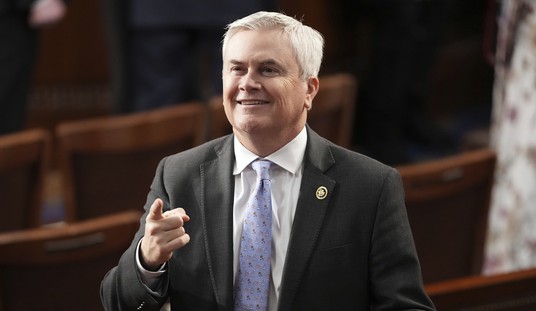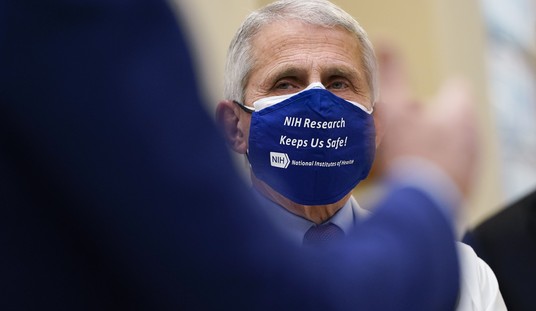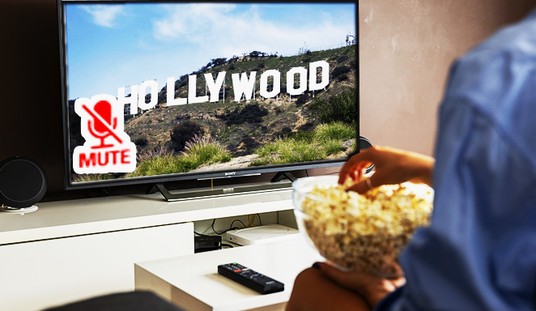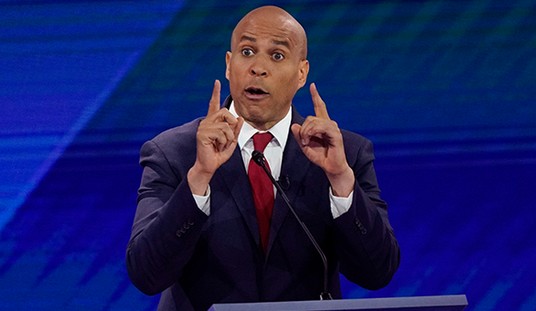 To all outward appearances, Democrats and liberal-progressive pundits are confident to the point of arrogant, gloating certainty about the 2016 presidential election. In part this is “victory disease” – they were sure they would win in 2008 and 2012, they were right, so they are convinced it shall always be so. In part it’s a defense mechanism – they got shellacked in 2010 and 2014, and the best way to convince yourself that these losses were illegitimate as a repudiation of their party and its message is to argue that lower-turnout off-year elections don’t represent the real American people who turn out for general elections, who are presumed to give Democrats an unstoppable demographic advantage in all future elections. In part it’s a matter of having settled on a famous and “historic” (first woman) nominee while Republicans are still going about the messy business of sifting through the 14 remaining GOP candidates. And in part it’s calculated strategy, given how much of modern campaigning in general and the strategy of the stilted, sclerotic Hillary campaign in particular will depend on simply bluffing the voters into believing that she’s already an inevitable lock to win. But behind the facade of braggadocio, there are signs that Democrats are starting to worry that their 2016 strategy and prospects may not be as foolproof as advertised.
To all outward appearances, Democrats and liberal-progressive pundits are confident to the point of arrogant, gloating certainty about the 2016 presidential election. In part this is “victory disease” – they were sure they would win in 2008 and 2012, they were right, so they are convinced it shall always be so. In part it’s a defense mechanism – they got shellacked in 2010 and 2014, and the best way to convince yourself that these losses were illegitimate as a repudiation of their party and its message is to argue that lower-turnout off-year elections don’t represent the real American people who turn out for general elections, who are presumed to give Democrats an unstoppable demographic advantage in all future elections. In part it’s a matter of having settled on a famous and “historic” (first woman) nominee while Republicans are still going about the messy business of sifting through the 14 remaining GOP candidates. And in part it’s calculated strategy, given how much of modern campaigning in general and the strategy of the stilted, sclerotic Hillary campaign in particular will depend on simply bluffing the voters into believing that she’s already an inevitable lock to win. But behind the facade of braggadocio, there are signs that Democrats are starting to worry that their 2016 strategy and prospects may not be as foolproof as advertised.
The theory that Democrats and left-leaning pundits have promulgated since 2012 is that all the old categories of “swing voters” in the center of the electorate are now irrelevant, because they can depend on a permanent general-election majority consisting of 1) mostly urban non-white voters, 2) mostly urban, childless, non-religious white progressives, and 3) the youngest voters. The only thing Democratic politicians need do, the theory goes, is to offer the needed combination of left-wing progressive politics and culture-war hot button wedge issues; after that, the data-miners and hashtag and meme factories will summon these voters to the polls out of the apathetic torpor with which they view elections and government the other 47 months of the political life cycle.

This is not merely an academic theory; what you believe to be necessary to constitute a popular majority has enormous consequences for every aspect of politics and campaigns, from the policies you champion to the messages you campaign on to the places you send your candidates and the ways you raise money, and even to the people you choose to put on your national ticket. The theory might be proven correct in 2016; but it is also possible that the 2008 and 2012 electorates were a feature of the candidates in those races (matching the first-ever black presidential candidate against two uninspiring moderate Republicans with specific political vulnerabilities) and the conditions of those elections (including a financial crisis and Iraq War fatigue in 2008 and a lavishly funded incumbent in 2012). Yet, everything we have seen of the Democrats’ public behavior and statements thus far this cycle suggests that they are all-in on the assumption that driving up progressive voter turnout at the left-end margins, rather than appealing to swing voters in the ideological center, is all the Democrats need do to prevail (see, just for one example out of the pander-a-thon in the Democratic debates, Hillary’s approach to immigration).
In fact, the party recently produced an “autopsy” of their rout in 2014, which included the diagnosis that Democrats have no coherent message, yet recommended no alteration of their stances but rather a project to develop “narratives”:
[W]e lack a clear message about what unites and animates us as Democrats. This has contributed to a disjointed style of communicating through long lists of policy statements, which are not well understood or embraced by voters (even though many support the policies and issues we champion). The lack of a cohesive narrative impedes the Party’s ability to develop and maintain a lifelong dialogue and partnership with voters. This finding led to the creation of the National Narrative Project.
The only actual concrete recommendation in the document was a discussion of filing lawsuits to defang laws against voter fraud.
The Static Electorate Fallacy
I have criticized the Democrats since 2012 as falling into the Static Electorate Fallacy: the assumption that the 2012 results are the demographic and geographic starting point, which presents a high barrier to Republicans’ ability to maneuver within a narrow band to eke out the additional votes they need. The static, between-the-48-yard-lines map that most Democratic-leaning analyses describe is an accurate picture of the 2012 election, when President Obama was running for re-election; the 2004 election, when President Bush was running for re-election; and the 1996 election, when President Clinton was running for re-election. But it is a terribly inaccurate description of the 2008 election, when the voters faced two new candidates after 8 years of President Bush, and the 2000 election, when the voters faced two new candidates after 8 years of President Clinton. That’s not a coincidence. As I’ve explained at length before over at The Federalist, in thirteen straight elections since 1816 in which the re-election of an incumbent was followed by an election with no incumbent on the ballot, the popular vote shifted significantly away from the party in power every single time, in all but one case (the election of 1868) by a margin wide enough to hand the GOP the election in 2016. Without rehashing that whole history, one reason for this is that voter turnout tends to grow almost three times as fast from the prior election when there’s no incumbent on the ballot. To pick a recent example from the Republican Party’s last successful candidate, Bob Dole got 39 million votes in 1996: George W. Bush got 50 million in 2000, and 62 million in 2004. Dole carried 19 states; Bush, four years later, carried 30. Obama, likewise, carried nine states John Kerry had lost, including Virginia (where Bush had carried 54.1% of the two-party vote and Democrats hadn’t won since 1964), North Carolina (Bush took 56.2% of the two-party vote) and Indiana (Bush took 60.4% of the two-party vote). Maybe changing demographics mean that history has no relevance anymore, but it seems risky to assume that the pattern of dramatic changes of just 8 or 16 years ago, continuing an unbroken trend that dates back to the demise of the Federalist Party, is no longer relevant.
Warning Sign Number One: The Greenberg Poll
The first major warning sign that a static 2012 electorate – or one inevitably progressing in the Democrats’ direction – may not materialize in 2016 is a recent battleground-state poll by longtime Clinton pollster Stan Greenberg and his firm Greenberg Quinlan Rosner, as explained by the Washington Post’s progressive activist Greg Sargent:
The survey, which was taken in four key battleground states — Colorado, Florida, Ohio, and Wisconsin — suggests that in those states, the demographics do favor Dems. That’s because the poll finds that RAE voter groups — who helped drive Obama’s wins — now make up a “majority or near majority of the vote” in all those states. The poll also finds Dems leading in Senate races in two of those states and tied in two others.
But members of the RAE are insufficiently engaged in next year’s election when compared to Republican-aligned voter groups…

Jim Newell of Slate explains the significance of Greenberg’s findings:
[O]ne question asks voters how interested they are in the November 2016 election on a 1 to 10 scale. Among those who answered 10, the leading demographic affiliations are: seniors, overall “non-RAE” (the Rising American Electorate, meaning unmarried women, young people, and minorities), conservatives, Republicans, and white non-college men. These are, as [mc_name name=’Sen. Ted Cruz (R-TX)’ chamber=’senate’ mcid=’C001098′ ] would describe them, “rock-ribbed conservative” demographics. The demographic groups with the fewest “extremely interested” members are overall “RAE,” millennials, and at the very bottom, white millennials, offering further proof that white millennials are the worst people ever created.
You might think such a poll result counsels caution in ignoring the middle; Salena Zito argues that it shows Hillary’s reliance on the gender card isn’t going to provide a silver bullet. But Greenberg, despite his decades-long role in the Clintons’ vaunted triangulation and 80/20 wedge-issue machine, is using the poll to argue that Hillary needs to go full-bore progressive, not to beat Bernie Sanders but for the general election:
Bill Clinton’s former pollster thinks it’s a mistake for Democratic presidential candidates to essentially run for President Barack Obama’s “third term.”
“That’s not what the country wants. It’s not what the base of the Democratic Party wants,” said longtime Democratic pollster Stanley Greenberg, whose past clients include Clinton and Vice President Al Gore. “The Democratic Party is waiting for a president who will articulate the scale of the problems we face and challenge them to address it.”
Greenberg thinks it’s time to go bigger.
Few other polls have directly measured enthusiasm; other polls seem to be at least assuming it, and though it’s an open question whether these are poll findings or simply assumptions, Democrats assume at their peril that the polls are all just skewed to ignore shifts in the electorate, as the losers argued in both 2012 and 2004. The latest Quinnipiac Colorado poll, for example, shows Hillary losing by double digits to every major Republican candidate – she trails [mc_name name=’Sen. Marco Rubio (R-FL)’ chamber=’senate’ mcid=’R000595′ ] by ten points and Ben Carson by five among women. The Marquette Law poll, the gold-standard poll in Wisconsin (which simultaneously shows a grim prognosis for [mc_name name=’Sen. Ron Johnson (R-WI)’ chamber=’senate’ mcid=’J000293′ ] in his re-election bid against Russ Feingold) shows Rubio leading Hillary 45-44 in Wisconsin after trailing her 48-40 in September. A national NBC poll shows the electorate D+1 (29% Republican, 30% Democrat) with independents leaning 30-22 in favor of the GOP, all significant shifts in the Republican direction since the spring of 2015. And of course, the RCP poll average shows a very longstanding trend of Americans disapproving of Obama’s job performance…

…and an even longer-standing trend of them believing by large margins that the country is on the wrong track:

None of this is in any way conclusive – it’s a year from the election, and Republicans haven’t picked a nominee yet and still might choose a weak one. But these are all early warning signs that the traditional dynamics that lead to rising voter enthusiasm in favor of the party out of power, and the decline of the party in power, may well be in play in 2016 as they have been without fail since 1816. If so, Democrats are right to be alarmed. Whether they are right to react by lurching even further left than Obama remains to be seen.
Warning Sign Number Two: Debate Ratings
Polling isn’t the only sign of a 2016 enthusiasm gap that has Democrats’ worries breaking through their usually united front to air their concerns in public. There’s also the fact that a whole lot more people are watching the Republican contenders debate, as this graph (which is accurate despite coming from Vox) shows:

The ratings for the first two main GOP debates swamped all prior records for primary debate audiences, and even the debates on hard-to-find networks like CNBC and Fox Business News (even I don’t have FBN on my cable package) and up against the World Series have outstripped the Democrats’ debate ratings. Heck, even the first Republican undercard debate drew 6 million viewers to watch Bobby Jindal, Rick Perry, Carly Fiorina, Rick Santorum, [mc_name name=’Sen. Lindsey Graham (R-SC)’ chamber=’senate’ mcid=’G000359′ ] and George Pataki. Hiding the Democrats’ debates against college football hasn’t helped, and some Democrats are complaining:
“We can’t fool ourselves — the Republicans are eating our lunch in terms of attention and viewership because of the unprecedented, unilateral, and arbitrary way the DNC Chair determined this schedule,” said Lis Smith, deputy campaign manager for Martin O’Malley. “It’s clear we need to open up the process, have more debates, and engage more voters in this process.”
…Saturday night’s broadcast was seen by roughly seven million fewer people than the previous Democratic debate, and the next two are also scheduled for potentially low-viewership weekends: the Saturday night before Christmas, and the Sunday night of the Martin Luther King Day weekend, during the National Football League playoffs.
…The low number of debates and weekend timing make it likely that the Republican candidates will get far more exposure than the Democrats, DNC critics say.
Newell argues that, however well-designed to shield Hillary (and Sanders’ off-message criticisms of Obama’s economic record) from public view, the low-rated debates are doing Democrats no favors:
[[mc_name name=’Rep. Debbie Wasserman Schultz (D-FL)’ chamber=’house’ mcid=’W000797′ ]’s] job is to protect Clinton. That’s why there are only six debates, and why three of the four debates are scheduled for time slots when few will be watching: It prevents Clinton from being nicked up too much by Sanders and O’Malley, or from saying something that may not play well to a more centrist general election audience…
…Wasserman Schultz’s theory has not just led to some nasty fighting in the public eye. It’s also made the task of winning the general election more difficult for Clinton.
…You need to have your own people be excited—and not just excited about defeating the opposition, which seems to be what Wasserman Schultz plows most of her resources into doing. Your party’s voters have to be excited about your party’s candidate. And if that candidate’s worth getting excited about, there shouldn’t be any hesitancy about exposing her to the public as much as possible, instead of hiding her few mass public appearances behind weekend football games.
It’s hard to overstate just how much is on the line for the Democratic Party in getting its “Rising American Electorate” numbers up. It was enthusiasm and turnout among these groups that pushed President Obama to two Electoral College victories—and, in turn, reoriented the Democratic Party to cater to these demographics, who then didn’t show up in nearly as strong numbers when Obama wasn’t on the ballot. The Big Question of 2016 Politics…has been whether Clinton could turn out these groups in similar numbers. If she can’t, then the 2016 election will look less like the 2008 and 2012 ones and more like the 2010 and 2014 ones. Meaning: the Democratic Party will be almost completely wiped out of American political leadership above the municipal level.
Warning Sign Number Three: Small-Donor Fundraising
Early in the process, one important sign of voter engagement is small-dollar donations – people may not be focused on the election when they answer polls, but opening their wallets means they really feel strongly. You may have heard that both Hillary and Bernie Sanders have raised more money than Ben Carson, and vastly more money than any other Republican candidate. What you may not realize is that the 2016 cycle has seen a vast increase in Republican small-dollar fundraising, and only the huge and unwieldy size of the primary field compared to the essentially bi-polar Democratic field – and the fact that so much attention has focused on Donald Trump, who is mostly self-funding – masks the fact that this is going on.
Paul Blumenthal at the Huffington Post notes the imbalance in third quarter fundraising:
While the top two Democratic candidates held the top two money positions for the third quarter, the bulging Republican field of 17 contenders (two have since dropped out) combined to raise more than Democrats — a switch from the previous quarter. Overall, Republican candidates pulled in more than $84 million, while Democratic candidates raised at least $57 million.…
Much of that Republican edge can be attributed to the inclusion of candidates who declared they were running after the previous fundraising quarter, including New Jersey Gov. Chris Christie, Ohio Gov. John Kasich, former New York Gov. George Pataki, former Virginia Gov. Jim Gilmore, and Wisconsin Gov. Scott Walker, who has since dropped out of the race. Combined, these new candidates raised $16.1 million.
Lawrence Brinton at National Review notes the deeper trend:
There has been a small-donor revolution in GOP fundraising in 2016. Below are the small-donor (under $200) donations by election cycle, through the third quarter of each year preceding the election.
2016: $61.3 million
2012: $16.7 million
2008: 28.4 million
2004: $9 million
2000: $13.9 millionNote that this fundraising boom effectively excludes Donald Trump, the leader in the polls, who would almost certainly be at or near the top of small-donor fundraising if he had been fundraising actively. Were that the case, the GOP’s small-donor dollars would probably be about triple the highest previous total ever raised.
Warning Sign Number Four: The Splintering Coalition
The final sign is that Democrats are scrambling to keep the various fractious elements of their coalition in the same tent. An example from today: President Obama and many progressives are mocking opponents of Syrian refugee resettlement as bigots, yet such opponents include not only the Mayor of Roanoke, Virginia – who penned a letter favorably citing FDR’s internment of Japanese nationals, and who sits uncomfortably on Hillary’s Virginia leadership team – but also a number of Democratic Congressmen representing majority Hispanic districts – who voted for today’s House GOP bill – and Hillary donor and Univision president Haim Saban, who called for more scrutiny of Muslim immigrants. Yet Democrats are banking so heavily on their theory of how to appeal to Hispanic voters that their presumptive Vice Presidential candidate, former ceremonial San Antonio Mayor Julian Castro, is apparently attempting to learn to speak Spanish, and Obama’s Administration is even going along with an ACLU lawsuit to allow deported immigrants with mental illnesses to re-enter the country.
On the black-voter front, Democrats are in enough of a panic about the “Black Lives Matter” movement that leading Democratic Party bundlers are meeting to discuss bankrolling the movement, which might look at first like a statement of dissent from the party but feels more like an effort to co-opt a group that has staged inconvenient protests of the Democratic contenders, in the hopes of channeling its energies into partisan turnout:
The meetings are taking place at the annual winter gathering of the Democracy Alliance major liberal donor club, which runs from Tuesday evening through Saturday morning and is expected to draw Democratic financial heavyweights, including Tom Steyer and Paul Egerman.
The DA, as the club is known in Democratic circles, is recommending its donors step up check writing to a handful of endorsed groups that have supported the Black Lives Matter movement. And the club and some of its members also are considering ways to funnel support directly to scrappier local groups that have utilized confrontational tactics to inject their grievances into the political debate….The Democracy Alliance was created in 2005 by a handful of major donors, including billionaire financier George Soros and Taco Bell heir Rob McKay to build a permanent infrastructure to advance liberal ideas and causes. Donors are required to donate at least $200,000 a year to recommended groups, and their combined donations to those groups now total more than $500 million. Endorsed beneficiaries include the Center for American Progress think tank, the liberal attack dog Media Matters and the Democratic data firm Catalist, though members also give heavily to Democratic politicians and super PACs that are not part of the DA’s core portfolio. While the Democracy Alliance last year voted to endorse a handful of groups focused on engaging African-Americans in politics ― some of which have helped facilitate the Black Lives movement ― the invitation to movement leaders is a first for the DA, and seems likely to test some members’ comfort zones.
On the white-progressive front, Bernie Sanders’ campaign is not a real threat to Hillary’s odds of winning the nomination, for any number of obvious reasons; Sanders may win New Hampshire and Vermont and maybe another state or two with a heavily white caucus electorate, but he’s mostly going to end up much closer to Bill Bradley’s 2000 showing than Gary Hart in 1984, let alone Barack Obama in 2008. But Sanders can still do damage if he gives voice to a “there’s no important difference between the parties” sentiment among economic and foreign policy progressives, which shows up in depressed turnout next November or a Naderite third-party vote. This Salon column is a good sample of that sentiment:
One must vote for any Democrat, regardless of how they treat a core constituency.
Right?
Wrong.
But think about Supreme Court nominees…
Ruth Bader Ginsburg is fine and the New York Times writes that she has “no interest in retiring.” Justice Scalia isn’t stepping down from the U.S. Supreme Court soon and will only contemplate retirement when he “can’t do the job well.” Anthony Kennedy is in “no rush” to leave the Supreme Court. Justice Breyer has no plans to step down but will “eventually” retire one day.
The paranoid legions, frightful of voting their conscience and actually upholding our democracy, can rest assured that all four Supreme Court justices mentioned are still capable of lasting four more years.
…If electing a person who voted for Iraq and accepts money from prison lobbyists is the next evolution of the Democratic Party, then it’s best to make a statement now…If by chance Sanders loses the nomination, I’ll write him in, and if Democrats lose, then the Democratic Party will evolve to cater to progressives tired of moderate Republicans posing as Democrats. The Democratic Party will learn to uphold its ideals and evolve toward progressive views on war, foreign policy and other topics integral to the presidency.
Most important, Democrats like Hillary Clinton will never again accept money from prison lobbyists or expect to win the presidency after voting for devastating wars like Iraq. If the Democratic Party learns the hard way, it won’t be my fault. It will be the fault of pragmatists who’ve coddled the DNC for fear of Supreme Court nominees, or the allure of political power. I’m only voting for Bernie Sanders, primarily because we still live in a democracy, and I’ll vote based upon my conscience. Bernie Sanders is a once in a lifetime political figure, and I won’t settle for his antithesis, simply to appease the same people who’ve allowed the Democratic Party to become what it is today.
That sort of purist thinking is electoral disaster for Democrats, and the longer Sanders goes and the more money he raises, the greater its threat may become. And the fact that Hillary is likely to win the primaries easily doesn’t lessen the threat – Gore lost, as did other candidates who cruised through the primaries without facing real jeopardy of losing:

Election Day is almost a year away and the GOP is far from settling on a nominee, so a lot can happen. But the early warning signs are all there: we could be coming up on an election where the Republican nominee does a lot more to excite turnout than Hillary Clinton does. If we nominate a candidate who also offers more to the independent and centrist swing voters Democrats are racing to abandon, Democrats could really have an unhappy November ahead of them in 2016.














Join the conversation as a VIP Member